Cinder blocks: standard sizes and area of use
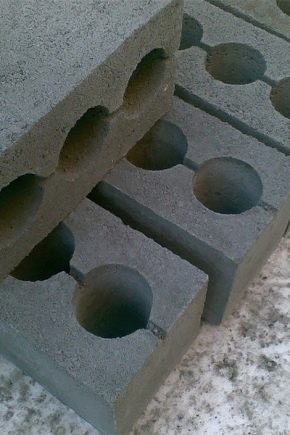
Cinder block is a popular material that is used in both residential and industrial construction. It has many positive characteristics that have made it wildly popular.
Pros and cons of the material
The cinder block is a practical building material that is produced using special forms and vibration devices with a press. A similar product is made not only in factory conditions, but also at home. Of course, in the latter case, quality products are obtained only with strict adherence to technology. The above material is encountered quite often today.
Its use is resorted to not only in the construction of ordinary residential buildings, but also in the design of all kinds of outbuildings, from baths and sheds to original gazebos and flower beds.
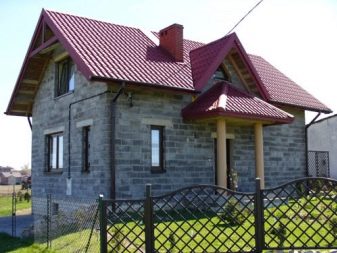
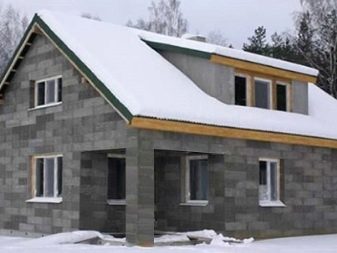
The slag block is characterized by the following positive qualities that have made it so popular in the modern market:
- one of the most important advantages of this material is that it is fireproof;
- the cinder block is not afraid of either high or low temperatures, even in severe frosts, such parts are not subject to deformation or destruction;
- houses and other structures made of cinder block are durable and reliable; so, a high-quality dwelling made of this material can easily last for more than a century without losing its original appearance;
- cinder block buildings can be repaired without problems; not only an experienced master, but also a beginner can easily cope with these works;
- the lion's share of experienced builders advises turning to this building material, since all work with it goes quickly, due to the large volume of blocks and their relative pliability - if necessary, the owners can easily correct such elements, for example, cut or cut off excess parts;
- construction work with this material is usually inexpensive;
- even an inexperienced master who has not previously encountered such work can handle the laying of cinder block elements; moreover, you can build a house from a cinder block with your own hands, without having a special education;
- such materials are characterized by good soundproofing properties, due to this characteristic in cinder block dwellings there is usually no unnecessary noise from the outside;
- cinder blocks are made from raw materials of different types, thanks to this, each consumer can choose for himself products that will serve without problems in certain conditions;
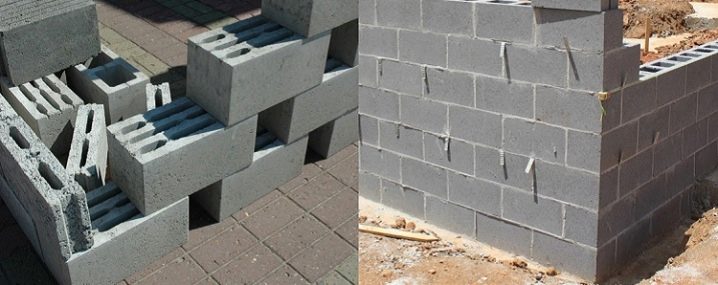
- this material does not have a particularly attractive or rich appearance, although a special variety can be found on the market - a decorative cinder block; such details look expensive and aesthetically pleasing, therefore they are often used as cladding of various buildings;
- the slag block is an excellent choice for the construction of a private house, since it is not a "target" for rats, mice and various insects; since parasites are not interested in this material, it does not need to be regularly treated with protective agents, such as antiseptics;
- this product is not subject to rotting, like, for example, natural wood, which over time loses its attractive appearance and many positive qualities;
- many consumers opt for cinder block, since it has a heat capacity, cinder block houses turn out to be very warm and hospitable;
- it is permissible to transport such materials not only in special pallets, they are often simply folded in a truck, without fear of chips;
- some types of slag blocks are lightweight, which is why structures made of similar materials can be placed on lightweight foundations;
- many buyers think that a cinder block can only be rectangular, in fact, today you can find blocks that have a very different shape; very original and eye-catching structures are made from them;
- such materials do not harm human health, and also do not cause allergic reactions;
- The cinder block is not afraid of temperature surges.
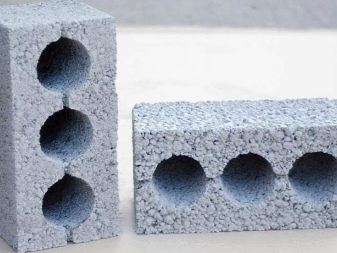
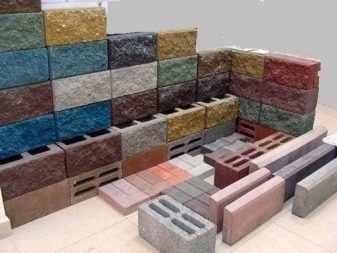
Professional builders strongly recommend that you familiarize yourself with all the disadvantages of slag blocks before moving on to direct work with their use.
These include the following:
- not all types of cinder blocks are lightweight, there are also very heavy options, work with which takes a lot of time and effort;
- if you want to spend money on the purchase of an attractive decorative material, then you need to prepare for the fact that it will not be possible to make from simple blocks of a beautiful construction;
- these blocks must be protected from contact with dampness and moisture, since they will penetrate into the structure of the material; over time, dampness will accumulate in the blocks, and then lead to their stratification and destruction;
- certain types of such blocks cannot be called environmentally friendly, since they contain aggressive chemical components;
- when choosing an aesthetic decorative block, one must take into account the fact that it is highly hygroscopic;
- laying cinder block walls, many craftsmen are faced with the problem of laying communications; in carrying out such work, you have to turn to special devices;
- high multi-storey buildings cannot be built from these blocks;
- without finishing, the foam block does not look too beautiful, so it is usually finished; the owners may encounter one more nuance - plaster or paint and varnish mixtures cannot be laid on such materials due to the water absorption of the blocks, it is permissible to finish these bases only with specialized materials;
- the geometry of the cinder blocks leaves much to be desired, because of this, when laying cinder block walls, craftsmen often have to additionally align the planes;
- blocks that were not formed in an industrial environment may be of low quality due to non-observance of proportions or manufacturing technologies.
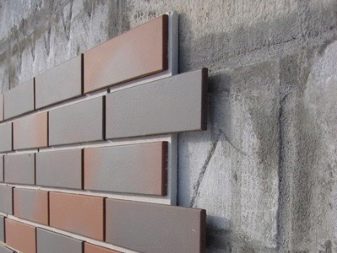
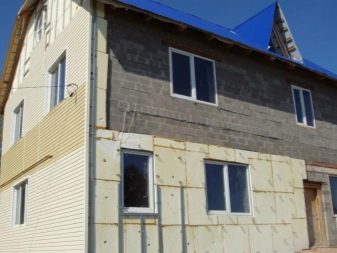
Views
On the building materials market, you can find several types of slag blocks.
- Hollow and corpulent. These materials are used in construction with enviable regularity. So, full-bodied specimens can be used in the manufacture of foundations, columns, supporting structures and plinths. Blocks with voids are used in the construction of partitions and walls. Such products are very lightweight, so they do not create serious loads on the bases.
- Decorative. These types of cinder blocks are facing. They have occupied their niche in the building materials market quite recently, but have already managed to gain popularity among buyers due to their attractive appearance. On their surface there is a neat decorative coating that imitates stone or plaster. This addition not only makes the blocks more aesthetic, but also protects them from contact with dampness and moisture. Of course, such materials are more expensive than simple ones, but their quality justifies the price.
- Fundamental. Blocks of this type are also called artificial stones. Such products have excellent strength characteristics. Moreover, these materials serve for a very long time.Over time, foundation cinder blocks do not shrink or deform.
- Partitional. These types of cinder blocks are designed for laying partitions (hence the name). From these materials, you can build smooth and neat walls of the correct geometry. At the same time, the consumption of cement mortar cannot but rejoice the master. Such blocks also differ in that they are easy to use.
- Colored. These types of cinder blocks are used as often as conventional options. However, they are very often referred to in the manufacture of fences and columnar structures. One or another shade is given to these blocks even during their manufacture. For this purpose, the solution is supplemented with crushed brick chips or colored chalk.
- Torn and chipped. Recently, torn and chipped cinder blocks have appeared on the market. Their surface is considered decorative, as it is an imitation of "torn" or chipped bricks. The specified materials are used for cladding due to the original appearance.
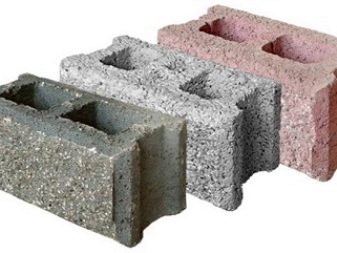

Slag blocks are also divided according to their bases.
There are several options.
- Slag. Slag-based materials are the most common. They boast good thermal insulation qualities. Such blocks are capable of serving as much as a simple brick. But here it should be borne in mind that the service life of these materials depends on their composition.
- Arbolite. Wood concrete blocks also have excellent thermal insulation qualities, but they do not last as long as slag products, which is a rather serious drawback. If, however, substances that extend their durability are added to the composition of wood concrete blocks, then this makes the materials less environmentally friendly.
- Expanded clay. Blocks based on expanded clay are rightfully recognized as the most environmentally friendly. These materials are characterized by excellent thermal properties and a very long service life. The positive properties of such blocks are due to their expanded clay base, since expanded clay itself is a lightweight material, in the structure of which there are natural pores.
Today, experienced experts recommend stopping their choice on expanded clay cinder blocks, which is explained not only by their environmental safety, but also by their unpretentiousness. Today many dwellings in Europe are built from these elements.
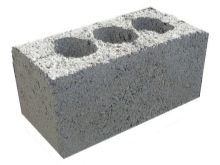
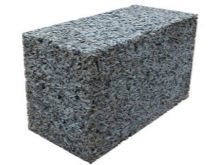
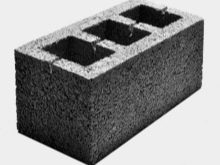
Composition
Many consumers are sure that slag is the main component in the composition of cinder blocks. However, it should be borne in mind that the name of this material has long passed into the category of conditional.
The following materials can be used as block filler:
- granite crushed stone;
- sand;
- river gravel;
- expanded clay;
- sawdust;
- slag;
- ash.
The properties and characteristics of cinder blocks directly depend on the components that are present in their composition. For example, solid parts are usually made from ingredients such as pebbles, rubble, and sand. The result is dense and heavy materials.
When preparing lighter concrete solutions, perlite, slag, expanded clay are used. From such a base, blocks with a low weight and low thermal conductivity are obtained.
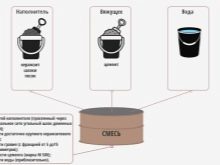
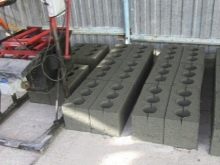
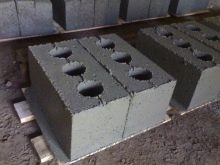
Dimensions and weight
The standard dimensions of typical slag blocks in accordance with GOST are as follows:
- 39 cm - length;
- 190 mm - width;
- 188 mm - height.
But do not think that in retail outlets you can find blocks that have only such dimensions. Materials of other sizes are also on sale, for example, 400x200x200 mm or 395x195x195 mm. There are special types of cinder blocks - half blocks. Usually, partition structures are folded from them. The standard dimensions of these materials are 390x120x188 mm. Do-it-yourself blocks can be significantly different in size from products manufactured on an industrial scale. For example, parts with dimensions of 300x140x140 mm are widespread.
As for the weight of the slag blocks, it is worth considering that this parameter is influenced by the following features:
- fillers that are included in the blocks;
- direct internal structure of materials;
- solid or hollow block type.
The average mass of a solid cinder block (standard) is 25–28 kg. Hollow variants can weigh 13–18 kg, and the weight of half-blocks often varies in readings from 10 to 13 kg.
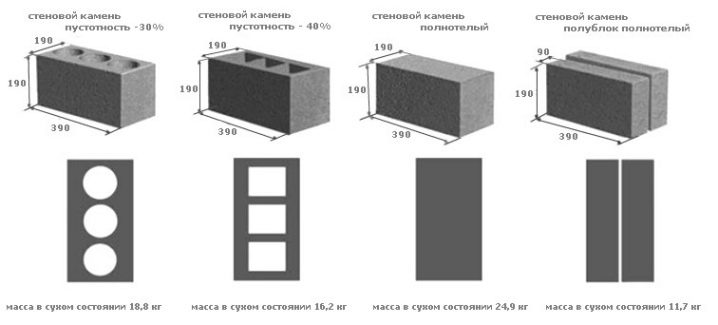
Scope of application
The cinder block is renowned for its multitasking ability. This material is used in different fields and has a different purpose.
The following examples are worth paying attention to:
- high-density products are used for the construction of residential buildings, while external walls are made from solid parts in those buildings where there is more than 1 floor;
- this material is also used in the construction of baths; it is suitable for such buildings, since it is not afraid of fire and does not rot;
- you can build a garage from cinder blocks;
- reliable fences are obtained from these materials, for this purpose it is recommended to use only frost-resistant materials of high strength;
- foundation cinder block structures are simple to build, and also serve for many years; the strength of such a foundation will depend on the specific type of soil on the site and on the number of floors of the future construction;
- most often this material is used for masonry walls; so, for external structures, solid parts are usually used or such blocks in which the level of voidness is 30%;
- many owners build sheds from cinder blocks on their plots; if the appearance of such a building does not play a special role, then absolutely any type of blocks (with any composition) are used for it;
- good-quality gazebos are obtained from cinder blocks, of course, people do not turn to such structures so often, since a classic gazebo should be more elegant and attractive, but cinder block structures will turn out to be warmer and more stable; for such construction work, you can use materials in which the level of voidness is 40%;
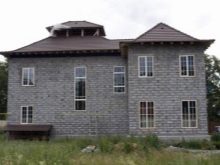
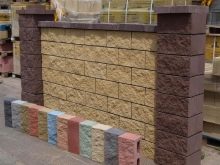
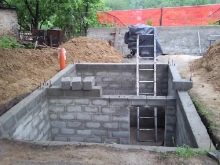
- from the slag block, wonderful basements are obtained;
- it is permissible to use this material when erecting a rough base, and subsequently decorate it with decorative materials;
- if there is a noticeable drop between the threshold of the house and the plane of the yard, then it can be laid out with a cinder block porch, which will easily “smooth out” the drop; the rough structure can then be finished with tiles or porcelain stoneware - it all depends on the preferences of the owners;
- few people know, but it is quite possible to build an outdoor toilet from a cinder block; as a rule, such structures are additionally insulated, therefore, it is permissible to use any type of block (even with a very low density level);
- many consumers are wondering whether it is possible to build a pool on the site from a cinder block; in fact, experts still advise filling such structures with concrete, since the slag elements will absorb water and begin to collapse, it is better to make formwork from such blocks;
- some home craftsmen make barbecues from slag blocks; the area where the fire will be made is recommended to be made of refractory bricks, and the lower part should be laid out in blocks;
- a used cinder block is sometimes more expensive than a new one, as a rule, such materials were previously laid out using the correct technology and were manufactured at the factory; these types of slag blocks can be used for the construction of cesspools.
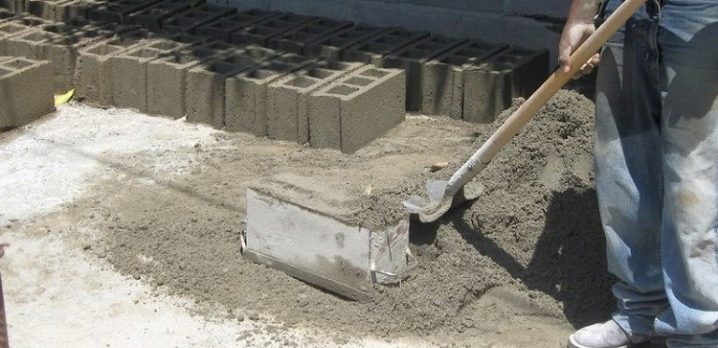
For the pros and cons of the cinder block, see the next video.













The comment was sent successfully.